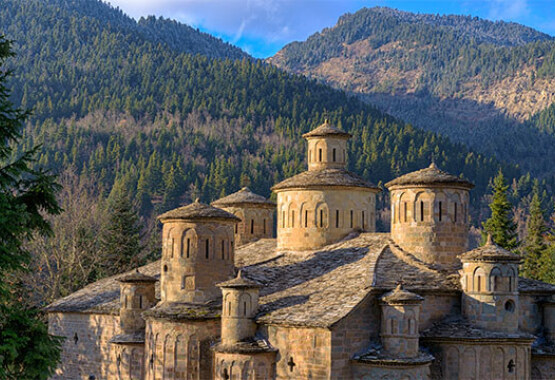
Windmills
The stone giants of the Aegean
The cylindrical landmarks of the Cyclades tell stories of tradition and human labour to the hills which they beautify with their presence. Invented in the pre-industrial times, they give a perfect example of ecology, as they make the best of the Aeolian energy to satisfy the man’s need for the cornerstone of nutrition: bread.It was in the 12th and 13th centuries that windmills appeared on the Greek territory. Before long they had turned into a favourite topic for writers, painters, and photographers alike. As a matter of fact, more than 600 of them have been installed on the Cycladic archipelago. To build a wind mill used to be a hard and costly thing. Its spot had to be carefully chosen: the more exposed to northerly winds, the better. That’s why they stand perched on hillsides, and like vigilantes at the exits of gorges, or like lighthouses on the edge of capes. On the other hand, the distance to the village was no less important, as wind mills had to be easily accessible by the beasts of burden.
The most common type of wind mills had been the stone built cylindrical ones, with a rotating and following-the-wind conic roof and a straw “hat”. White triangular sails set against some huge antennas would put in motion a system of axes and wheels, which would make a mill stone turn above another mill stone, the latter one still, to grind wheat, barley and corn into flour.
In action
The mills could go on working even on a 24/7 basis, depending on the needs, the season and the weather. Wind permitting, a mill could grind 20-70 kilos of wheat per hour. The villagers would take their crops to the mill. Even women would take part in carrying the heavy load from and to the mill. At the end of the grinding, the mill man would keep 10% of the product as a reward. What is really interesting is that the mill men had developed the skills of both a captain and a skipper in that they could read the weather signs and tell about the strength of winds, while they could also masterfully handle the sails of the mill.
The island of the windmills
There are still many windmills on the Greek islands, but not in their original use of course. Some of them have been repaired to work as museums or art exhibition halls, while others now offer accommodation services. Some have been turned into houses.
Beyond doubt, there is one island that is identified with the windmills: it is fascinating Mykonos. There used to be over 20 windmills on the super famous island. Seven of them survive and travel all around the world on postcards and photographs. They withstand the strong winds to present a unique backdrop for romances to start and love affairs to culminate.




